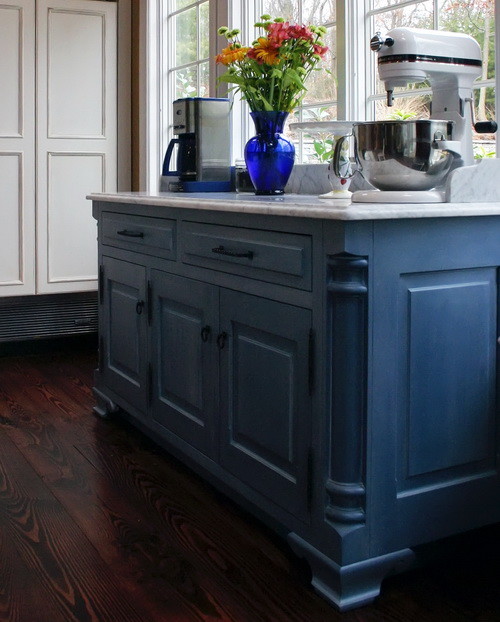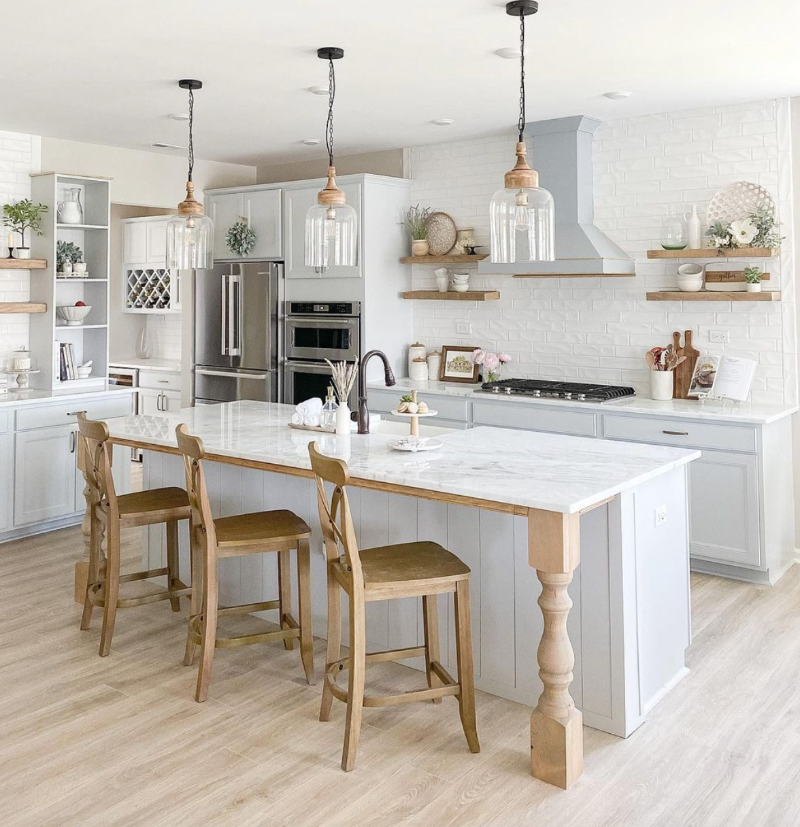Change Your Kitchen with Stunning Kitchen Island Legs
Change Your Kitchen with Stunning Kitchen Island Legs
Blog Article
A Guide to Picking the Suitable Kitchen Area Island for Your Home
Comprehending your kitchen area's spatial dynamics is the preliminary step, ensuring that the island fits perfectly without interfering with the circulation. The option of products and coatings additionally plays an essential role in integrating the island with your cooking area's general style.
Assessing Your Space
Prior to choosing a kitchen island, it is vital to completely evaluate your area to make sure the enhancement will certainly be both useful and aesthetically pleasing. Begin by measuring the available area, including the width, size, and elevation of the kitchen. Precise measurements are critical to avoid buying an island that bewilders the area or one that is overmuch tiny.
Take into consideration the existing format and just how the island will integrate with the current traffic circulation. A well-placed island must not block paths or hinder access to vital home appliances, such as the range, refrigerator, and sink. Leave ample clearance room-- usually around 36 to 48 inches on all sides-- to enable for comfy activity and office efficiency.
Next, assess the all-natural light and sightlines within your kitchen area. An island that obstructs a home window or interferes with visual cohesion can make the space feel confined and dark. Consider how the island's placement will certainly influence lights and exposure, guaranteeing it enhances as opposed to diminishes the kitchen area's ambiance.
Figuring Out the Function
Figuring out the objective of your kitchen island is an important step in guaranteeing it fulfills your specific needs and choices. Prior to diving into layout or size factors to consider, it is necessary to clarify what main feature the island will serve in your cooking area. Will it be a central center for dish prep work, a laid-back eating location, or potentially an additional storage remedy?
Furthermore, adequate counter space for mixing and chopping, along with easily accessible storage space for kitchen tools and components, can change the island right into a reliable workstation. Alternatively, if the island is planned to promote social communications or offer as a dining location, seating plans end up being paramount.

Selecting the Right Size
Choosing the best size for your kitchen area island is a balance of performance and area optimization. A perfect kitchen island should provide ample work area while guaranteeing that movement around the cooking area stays unobstructed. Begin by determining your kitchen room; a minimal clearance of 36 to 42 inches around the island is needed to allow for comfortable activity and access.
The measurements of the island should mirror its designated usage. For circumstances, if the island will serve mostly as a prep area, a size of 24 to 36 inches may be enough. If it is to suit seats, you ought to consider a bigger dimension, typically determining at least 48 inches in size. Islands visit this web-site committed to home appliances or sinks may call for extra room to house these functions appropriately.

Finally, guarantee that the island's dimension matches the overall kitchen layout, avoiding any overwhelming visibility that might interfere with the kitchen's visual and utility - kitchen island legs. Careful preparation and specific dimensions will assist you achieve a efficient and harmonious cooking area atmosphere
Finding Materials and Finishes
After identifying the ideal dimension for your kitchen island, the following step includes choosing suitable products and surfaces. The selection of materials considerably affects both the visual allure and capability of your kitchen island. Popular materials for counter tops consist of quartz, granite, and butcher block, each offering unique benefits. Granite, recognized for its toughness and ageless sophistication, is very resistant to scrapes and heat. Quartz, an engineered stone, provides a non-porous surface that withstands stains and microorganisms. Butcher block, made from hardwood, includes a warm, rustic appeal and is perfect for cooking.
In addition to the kitchen counter, consider the products for the island base. Solid timber offers a traditional, durable look, while stainless-steel gives a sleek, contemporary appearance and is simple to clean. Painted coatings can introduce a splash of color, with alternatives varying from muted pastels to bold, vibrant tones.
When picking coatings, ensure they match the general cooking area design. Matte surfaces offer a modern feel, while glossy finishes can develop a refined, high-end appearance. Take notice of the sturdiness of finishes, especially in high-traffic areas, to preserve the island's appearance over time. Picking the appropriate materials and finishes will certainly enhance both the performance and visual appeal of your kitchen island.
Integrating Practical Attributes
Integrating practical functions into your kitchen area island can substantially boost its utility and convenience, changing it right into a flexible focal point of your kitchen. One crucial attribute to consider is extra storage space. Incorporating cupboards, cabinets, and open shelving can offer much-needed room for kitchenware, tools, and small appliances, assisting to keep a clutter-free environment.
One more important enhancement is a built-in sink or cooktop, which can enhance dish prep work and clean-up procedures. A sink can assist in jobs such as washing vegetables and cleaning up recipes, while a cooktop can enable cooking straight on the island, cultivating an extra social and interactive cooking experience.
Consider integrating seating choices, especially if your cooking area functions as a casual eating area. Bar feceses or integrated benches can transform the island into a multifunctional area for dishes, homework, or informal gatherings.
Lastly, integrating electric outlets right into your kitchen island can enhance its usefulness. Outlets offer convenient access for tiny kitchen appliances, billing terminals for digital gadgets, and extra lights alternatives.
Conclusion

Before selecting a kitchen area island, it is essential to completely assess your space to ensure the addition will be both functional and visually pleasing.Choosing the best size for your kitchen island is a balance of capability and space optimization. kitchen island legs. An excellent cooking area island need to supply enough work area while making certain that movement around the cooking area remains unimpeded.Including useful functions right into your cooking area island can considerably improve its utility and convenience, changing it into a flexible focal point of your cooking area.In final thought, selecting the optimal cooking area island requires a complete evaluation of the available room, quality regarding its primary feature, and cautious consideration of the appropriate size and materials
Report this page